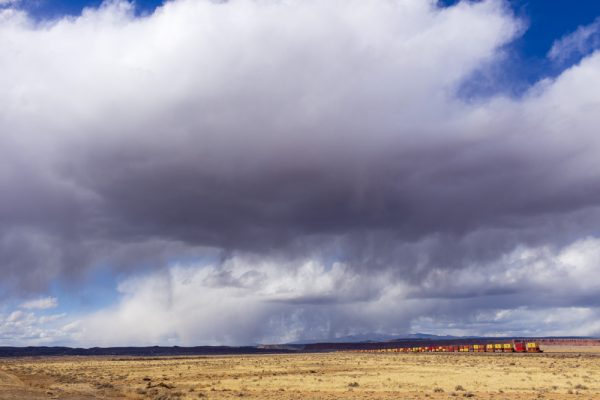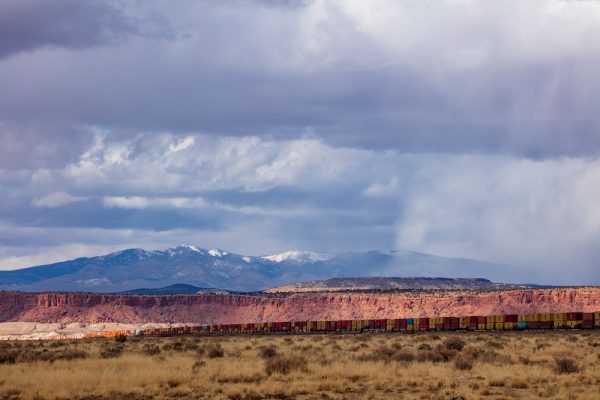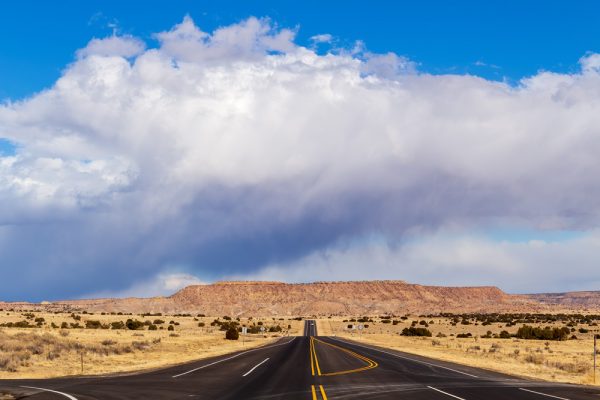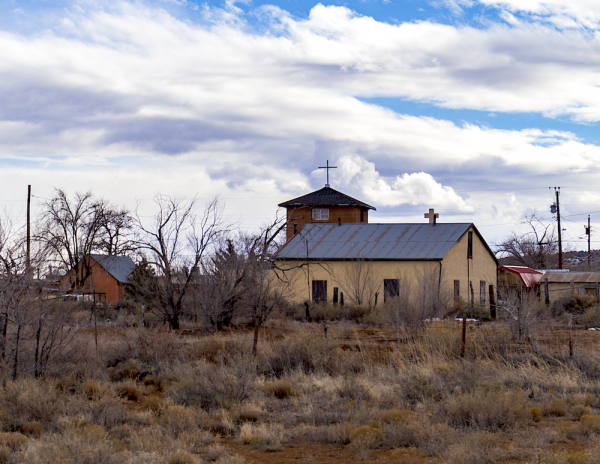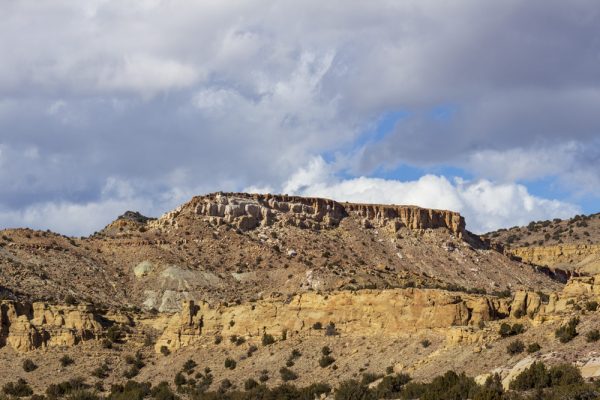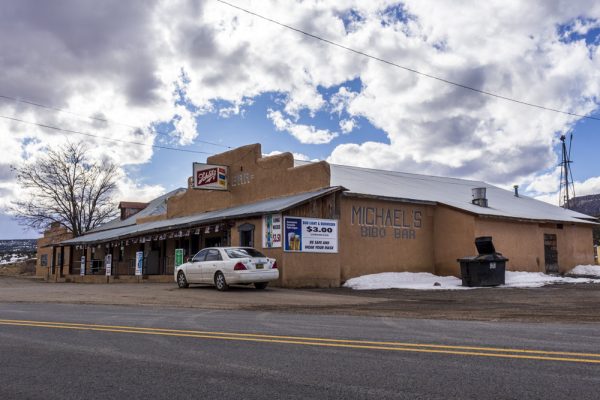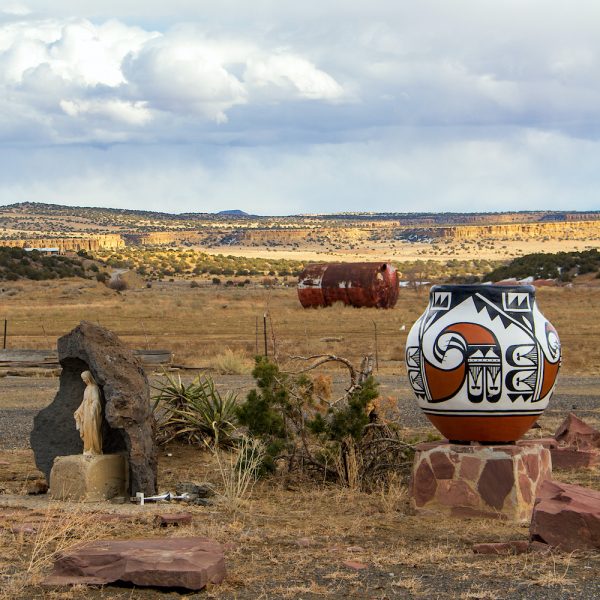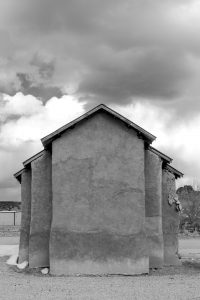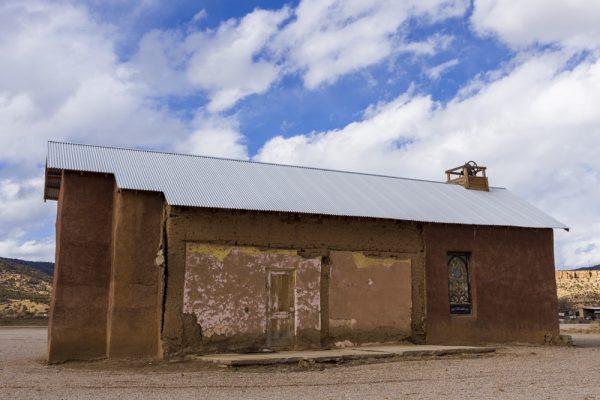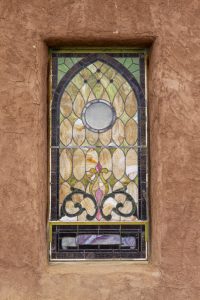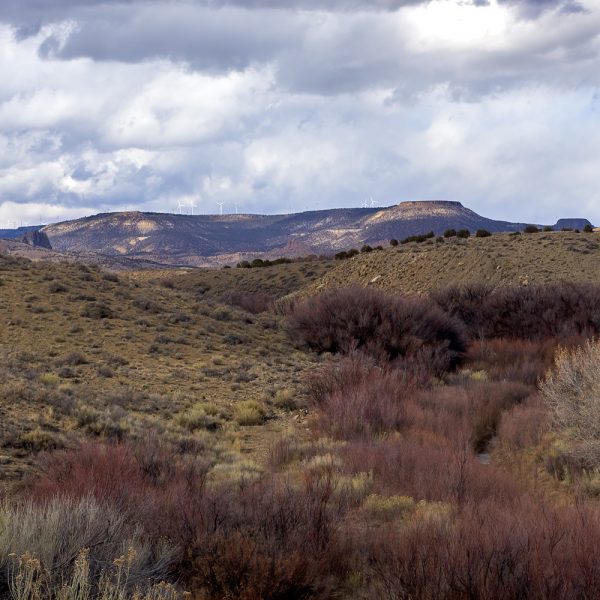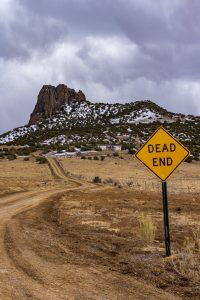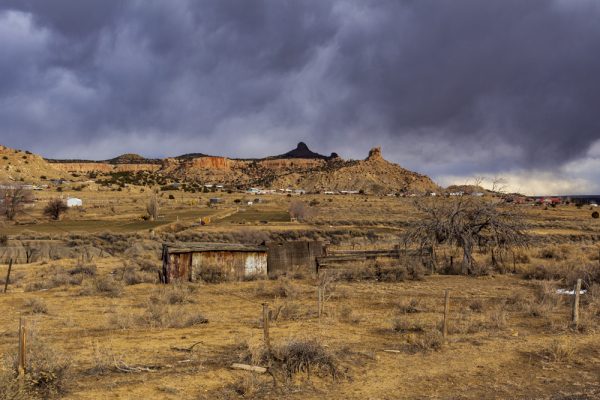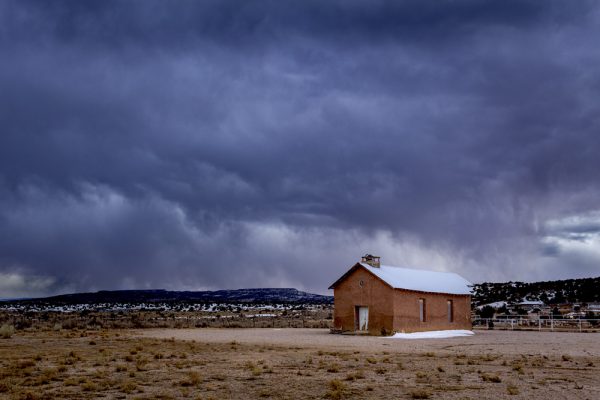Day Trip: Mesita, Bibo, Moquino, Seboyeta
by Bruce • January 26, 2021 • Roadies • 0 Comments
Early Sunday afternoon, I had some time, so I set out towards a sunny west, originally planning to visit El Morro and see Juan de Oñate’s cursive on Inscription Rock.
After a few long glances at the landscapes off of I-40 around Mesita, I called an audible and thought I’d stick around in this area.
Mesita, one of Laguna’s six pueblo villages (Laguna, Mesita, Paguate, Seama, Paraje, and Encinal), sprawls at the base of several mesas, and is the first Laguna community you meet as you head west from Albuquerque.
For me, the draw to pull off the freeway by Mesita was not due to the view of the village from afar (which, like each of Laguna’s villages, is actually closed to access by outsiders due to COVID-19), but rather to admire a huge freight train parked next to the mesa by the community.
The village of Mesita was closed, and the village of Laguna was closed, but NM-279, a 12-mile spur road heading north from Laguna, was open, so I took it, knowing nothing about it or where it went. All I knew was Mt. Taylor in the distance had snow on it, and this road headed sort of that way.
NM-279 climbed a little and then offered me some lovely views east of a long valley, mounds and mesas in the area, mostly on Canoncito Indian Reservation, a solitary checkerboard square of Navajo land west of Albuquerque and the Rio Puerco.
In a short time, I was passing by exits to Paguate, another closed Laguna village that straddles the road, and soon I was in the rural hamlet of Bibo. Later, I rounded a bend, summited a cut through a sandrock rise, and I entered Seboyeta, another small valley community, and the terminus of NM-279.
This valley, defined in part by the Seboyeta Creek running through it, is part Laguna Reservation, part Spanish land grant, and part Navajo country. Indeed, when Spanish, and later European settlers, tried to make a start within it, the Navajo did not make it easy for them.
My access to Paguate blocked, I rolled on to Bibo and parked in the barren lot at the sizable liquor store/market/restaurant Bibo Bar and Grille, the grandest building of the community at its chief intersection. I got out of my vehicle to walk and stretch my legs, and from homes across the road, dogs barked at me from the yards.
Later, I learned that Bibo was named after six brothers who moved to the area in the early 1880s, the youngest of whom founded a trading post and a post office.
After my short walk, I took the main town loop west from the mart and spotted a church on it.
My random wandering paid of with the experience of another old church.
Our Lady of Loretto Church sat alone in a big gravel lot, detached from its cemetery to the west, looking a little worn and forlorn.
I stopped and checked it out for a while as dark clouds approached from the west, and soon the temperature dropped.
After a few more photos, I was back in my truck and continuing on north, passing by the turning wind turbines of the Red Mesa Wind Project standing on nearby mesa heights, fleeing the graying clouds, looking for the next place.
Another bend led to a turnoff east from NM-279, with a sign by it that read “Moquino” with an arrow, framed behind by a mix of houses and mobile homes speckling the side of a hill. I took the road a few hundered yards and stopped to admire a jutting rock that reached for the dark clouds over it. I decided this community was home for the wind project workers.
Back on the road, later in the afternoon, I finished the last short leg of NM-279, which carried me to the end of the road’s pavement, and to a short inclined driveway by the village’s community center accessing Our Lady of Sorrow Catholic Church.
Seboyeta, now so named as a corruption of the original Spanish title “Cebolleta” (“little onion”), was founded in 1800 when thirty families from the Rio Grande Valley petitioned Spain and were given a land grant to settle in the region.
Unfortunately, a Spanish fray 50 years earlier had relocated Navajo families into the area to settle and Christianize them- a project which failed, resulting in the Navajos fleeing the locale but settling in the region, keeping them near enough to the future Spanish settlement to make it a constant target of raids.
Raids in the first year of the occupation of Cebolleta sent the colonists fleeing south to Chihuahua, Mexico, for sanctuary- until the Spanish Crown forced them to return to the settlement that it had given to them in a generous grant.
The colonists of the town raised 10 foot walls around the small community in an effort to protect themselves from Navajo incursions, but the walls were often ineffective. At one time, a 5,000-man party attacked the settlement and was on the verge of destroying it, if not for intervention of a Laguna force that helped chase the Navajo marauders away. On the grounds of that joint effort in battle, Laguna Pueblo and the Spanish in Cebolleto developed a warm relationship in the valley. Parts of the Cebolleto land grant around modern Paguate were given/returned by the colonists to the Laguna people as a thanks for their help in fighting the Navajos.
Had I read any about the area before my trip, I would have learned that the gravel lane behind the church would have taken me out to Seboyeta Canyon, and within it, to a grotto with pews sitting under a long ledge in a natural amphitheater- the Los Portales Shrine. In early settlement years, that location was a hiding place for Spanish settlers- both from Navajo raiders, and from inclement weather.
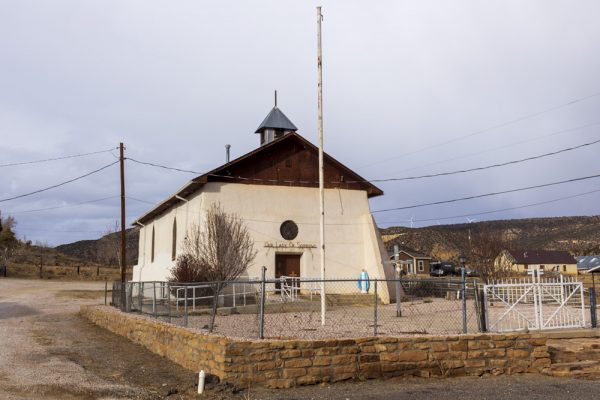
Our Lady of Sorrows in Seboyeta. A gravel road on the left wraps right behind the church to Seboyeta Canyon.
I reckon that trip is for another time.
Seboyeta continued to experience raids throughout the early 1800’s, as the “Indian Wars” in the west ignited early in the century.
After New Mexico became a U.S. Territory, in 1846, General Stephen Watts Kearny moved three companies of Missouri Volunteers into an anonymous outpost 60 miles west of Albuquerque as a show of force, and a potential solution, against incursions by the “Nomads of the Red Rocks” into local settlements. The Navajo didn’t really care about the new military outpost in Seboyeta.
After five years of continuing Navajo attacks on local communities, failed negotiations, and broken treaties, the U.S. Army garrison in Seboyeta was removed and relocated, and the outpost abandoned in 1851.
I parked and checked out the church for a bit, and seeing precipitation in the sky back in the direction from which I came, I hopped in my truck for a casual return trip back to Laguna and home. I enjoyed taking in the scenery around me and the periodic sprinkles, the shifting colors on hills and mesa walls, and the last quarter of the NFC championship game with Tom Brady adding to his legacy.
At Laguna, as I got on to I-40 to head east, the sky was gray with moisture and dusk, and the clouds were low and cottony with puffs and swashes reaching toward the earth. It was a quiet drive back as I enjoyed the marvels of broad views enclosed under a sheet of brooding cloud. By the time I reached the rim of the Rio Grande Valley and the descent into Albuquerque, the familiar mountains sitting opposite above the valley were erased by gray and white swirls.
My arrival home was the right time to get home from an enjoyable day trip.

